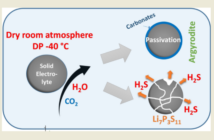Battery Management Systems (BMS) will make sealed lead acid batteries (SLABs) smart. This is the message of this season’s BEST (Batteries & Energy Storage Technology) Mag. BMS has been managing lithium-ion packs for a while, but only now reaching the lead acid industry. Not quickly enough, according to Gerry Woolf, the editor and publisher of BEST. “I still see the lead-acid technology as stand-alone and not part of a system. That’s the weakness: not lack of energy density, or weight, or least of all, disposal issues.”
The summer issue of BEST features the first of a series of articles by the electrochemist John Olson, preaching the necessity and inevitability of battery management systems. In particular, BMSs will be required to connect to the IoT (Internet of Things). What’s the Internet of Things? When objects are interconnected. For example, a “smart home,” where the blinds, lights, alarms, etc., are centrally controlled.
John Olson’s experience comes from working with battery packs to power electric vehicles, as well as “smart grids” (when EVs can provide electricity back to the utility grid), when he was working for Optima Batteries. Even though lead acid missed the boat on electric vehicles, Olson sees many new future opportunities for the lead acid battery industry to improve its large pack technology. For example, elevators could be self-powering: the extra gravity energy while going down can be stored in a battery. Not a battery, a battery pack, many batteries together. And, Olson writes, “Elevators are only the tip of the iceberg of potential energy-saving applications that also include loading cranes, ship locks and a variety of construction equipment.”
Olson is currently happy about the Ultrabattery being produced by East Penn and Furukawa, because the Ultrabattery is good at hybrid application, aka high rate partial state of charge (HRPSoC). But it can be better: only by making the lead acid battery smart, will it be able to compete with lithium-ion. Really, he says, nobody cares that lead acid batteries are fat, as long as they’re intelligent. That is, able to connect to a Smart Grid, and participate in the Internet of Things. And who wouldn’t want to participate in the Internet of Things? Because this use will be fairly stationary, the lead acid battery weight is not an issue. And its low cost is a definite plus.

Anyway, then Olson goes on to relate a whole conversation between the Battery and the Smart Grid, flirting. It’s kinda strange, you gotta read it yourself. Here’s a bad illustration, though:
Related articles:



